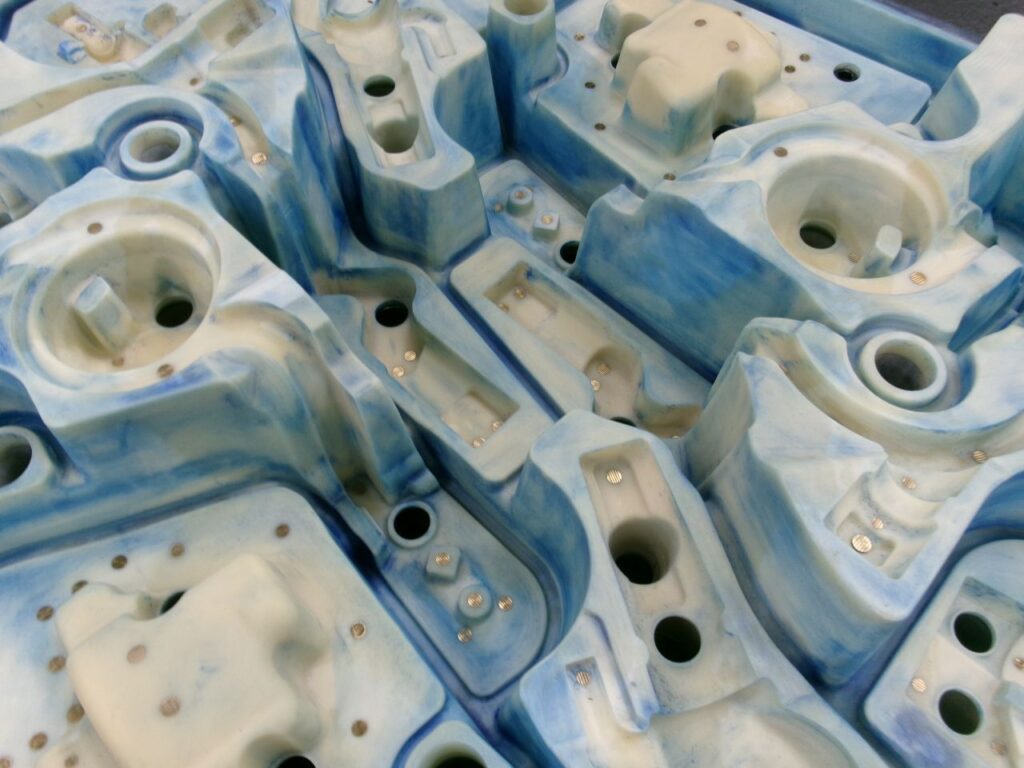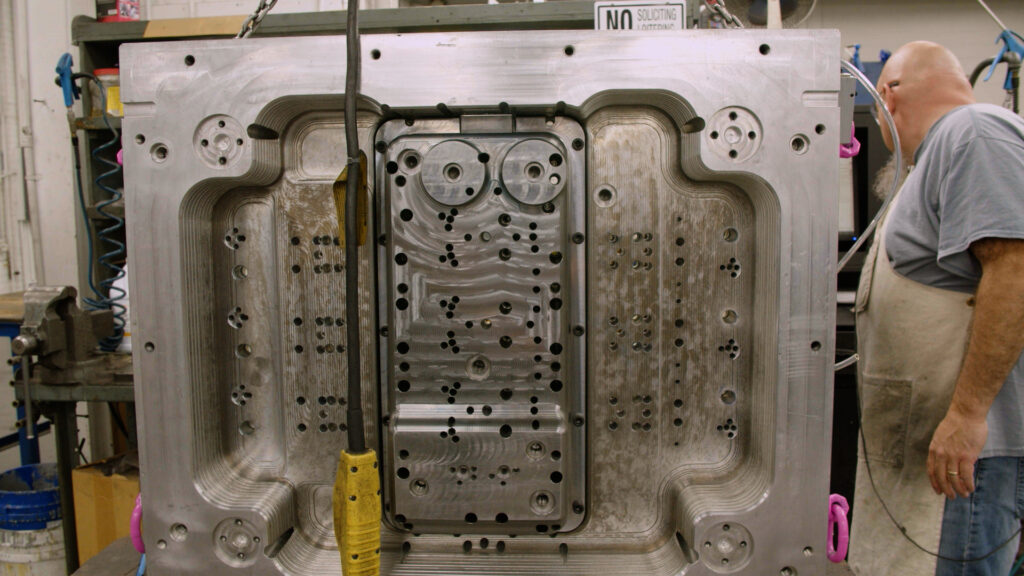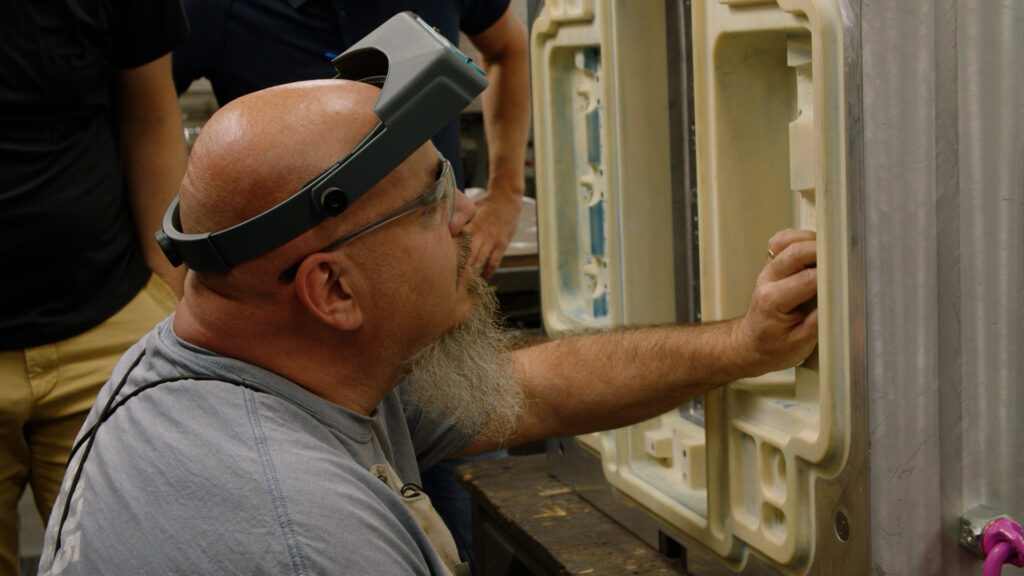For high volume production, foundry tooling durability is the name of the game. Especially when you’re working with semi-permanent foundry molds. With these projects, not only does your mold need to stand up to the wear and tear of foundry work, but so does your casting core box.
Even though molten metal will never go in your core box, the abrasive sand used to make cores still wears your tool down. While traditional steel or aluminum core boxes hold up well in these rough conditions, urethane core boxes last even longer.
But few foundry tooling manufacturers work with the material, and fewer do it well. High raw material costs, unique labor needs, and a hefty final sticker price often stand in the way. However, a correctly made urethane casting core box lasts for hundreds of thousands of shots before wearing — much longer than a traditional steel or aluminum core box.
Keep reading to learn how Anderson Global’s skilled journeymen patternmakers manufacture these durable urethane core boxes, as well as when you should and shouldn’t use urethane.

Prepping for the pour
The process for designing a core box made of urethane is much like designing any other foundry tooling… with a few key exceptions. The biggest one is the frame.
Because the material is so expensive, urethane core boxes aren’t made of solid urethane machined down from a larger block. Instead, we pour a .25” – .5” thick layer of urethane over an aluminum frame to set the box’s shape.

But before we can pour, we have to prep the aluminum. If we don’t, the urethane could delaminate from itself or split from the frame, damaging your cores and reducing the life of your core box.
There are two types of preparation we do. The first type entails cross-drilling patterns and adding undercuts called key cutters into the aluminum. This helps the urethane adhere to the frame in the right places.
For complex shapes, we may make minor adjustments to the aluminum so the tool is easier to polish and finish later. For example, if the core box will have a rounded feature, we can spotface a flat to the surface, so our journeymen patternmakers hit a flat spot when they drill in, for better purchase.
For the second type of preparation, we clean the aluminum with a lacquer thinner before sandblasting the surface. This ensures the urethane has something to stick to and doesn’t split from the frame.
Finally, to turn the aluminum frame into a true mold for the urethane, we create a wooden dummy to go on top. This dummy has identical geometry to the aluminum, offset by about 10 millimeters. When clamped to the base and sealed shut, it provides the perfect container to shape a urethane core box.
Pouring the urethane
Pouring urethane is tricky. It just takes one person to mix it (much like you would mix paint in a five-gallon bucket), but two or three to pour it. It’s heavy and takes less than 10 minutes to set, meaning you have to move quickly and strategically to pour enough, but not too much.
If it starts to harden before you pour all of it, it’s crucial to let it all set, then take the mold apart and re-prepare the areas that need more material. If you don’t, the new urethane won’t adhere to the original pour.
Polishing and final finishing
Just like aluminum and steel tools, a urethane core box must be polished and finished per its application’s standards. But unlike aluminum and steel tools, urethane core boxes must be finished by hand.
Because the urethane is softer, a slip of the hand while benching can easily push your core box out of tolerance. As such, care is crucial when adding in the steel venting and ejector pins, then grinding them to the right polish. Especially as you alternate between finishing the steel components, the aluminum base, and the layer of urethane — each material will react differently to the tools and require different techniques to be handled properly.

Revisions, changes, and maintenance
Urethane is very easy to repair. When cleaned, sandblasted, and cross-drilled (like the aluminum frame), it retains its strength and sticks to itself very well.
This makes it easy to re-machine and re-finish any areas where your design has changed or where regular maintenance is needed. In contrast, with a steel or aluminum core box, you’d have to break out your welding equipment or bolt a steel insert to your tool to make similar changes.
For longer term maintenance or serious wear, it’s both possible and cost-effective to machine out the urethane and repour it over your aluminum frame. In fact, you can reuse almost every component of your core box when it comes time for a new tool — the frame, pins, bushing, ejector pins, plates, and more.
When you should and shouldn’t use urethane
Urethane works for almost any application you could need; its cost and labor needs are why it isn’t more common. But urethane core boxes work especially well for high volume production needs, like in automotive, with parts like axles, engine components, and suspension components.
Urethane core boxes are also great if your foundry has weight restrictions on your core machines. Core boxes made of urethane weigh 20-30% less than those made of steel or aluminum. Using lighter materials helps your equipment wear less quickly and keep up with your needed production volumes.
However, if your foundry’s facility is small or has issues regulating the internal temperature, urethane might not be the best choice. If stored too closely to where you pour molten metal, the urethane can and will melt.
Partner with the urethane experts
Across the United States, there are only five suppliers who make urethane core boxes. We’re one of them. From design, all the way through finishing and final testing, Anderson Global is the total solution for all your foundry tooling needs, including the most durable core boxes possible. Get in touch today to get started on your new project.
